Nature 1. Natural Sciences
1. Matter and Materials
2. Matter: Mass, Volume and Density
3. The Universe and our Solar System
4. The Earth and the Moon
G. Glossary
5. The Atmosphere
6. The Hydrosphere
7. The Earth's Crust
8. The Earth, a Living Planet
G. Glossary
9. The Diversity of Life
10. The Plant Kingdom
11. The Animal Kingdom (I). Invertebrates
12. The Animal Kingdom (II). Vertebrates
G. Glossary
Este libro contiene:
-
15 secuencias
-
1174 recursos
-
Idioma:
- Inglés
Libro de texto
-
1. Matter and Materials
- Ir a ficha de secuencia
- 0 secuencias
- 113 recursos
All objects around us are made of matter. Matter is anything that occupies space. We find matter in three different states: solid, like ice, liquid, like water, and gas, like water vapour. We can make matter change its state by heating or cooling it. Matter is made up of an enormous number of different substances. The substances used to make objects are called materials. Materials can be natural, like wood, or artificial, like plastic.
-
2. Matter: Mass, Volume and Density
- Ir a ficha de secuencia
- 0 secuencias
- 101 recursos
All objects are made up of matter. As a consequence of this, they have mass, occupy a certain volume and have a certain density. Mass, volume and density are magnitudes. This means they have values which can be measured in units. Density is the relationship between the mass of a body and the volume it occupies. Different substances have different densities. For example, lead is denser than wood. [...]
-
3. The Universe and our Solar System
- Ir a ficha de secuencia
- 0 secuencias
- 97 recursos
Since ancient times, humans have tried to explain the nature of the Universe. For centuries it was thought that the Earth was a flat surface. People believed that everything in the sky rotated around the Earth. We now know that this is not so. We have seen the Earth from space, we have reached the Moon and we have sent space probes to other planets and throughout the Solar System and beyond. All this makes our old beliefs seem very simple. [...]
-
4. The Earth and the Moon
- Ir a ficha de secuencia
- 0 secuencias
- 86 recursos
In the past, people believed that the Earth was flat and that the Sun passed over and under the Earth to produce day and night. Now we know that the Earth is a sphere. We also know that day and night, the seasons, tides and eclipses are caused by the movement of the Earth and the Moon in space and the position of these bodies in relation to the Sun.
-
5. Glossary
- Ir a ficha de secuencia
- 0 secuencias
- 4 recursos
Alloy (n): a homogeneous mixture made up of metals or of a metal and a non-metal. atom (n): the smallest unit of matter, composed of particles called protons, neutrons and electrons. boiling point (n): the temperature at which a liquid changes into a gas. chemical symbol (n): a letter or letters that represent a chemical element. compress (v): to reduce the volume of a substance so that it occupies less space. [...]
-
6. The Atmosphere
- Ir a ficha de secuencia
- 0 secuencias
- 116 recursos
The Earth is surrounded by a mixture of gases we call the atmosphere. The air we breathe is part of the atmosphere. The atmosphere is composed of a series of layers. The most important layer is the troposphere. The troposphere is in contact with the Earth's surface. The atmosphere is fundamental to the existence of life. Unfortunately, human activity is polluting the atmosphere.
-
7. The Hydrosphere
- Ir a ficha de secuencia
- 0 secuencias
- 100 recursos
The hydrosphere is the part of the Earth where water can be found. This water includes oceans, seas, rivers, lakes, snow, ice, groundwater and water vapour in the atmosphere. The Earth is the only planet in the Solar System that has a lot of liquid water on its surface. This is why it is called the blue planet. Life exists on Earth because there is water. Large parts of our planet have very little water. It is a scarce resource. [...]
-
8. The Earth's Crust
- Ir a ficha de secuencia
- 0 secuencias
- 99 recursos
There are two large important areas on the surface of our planet: the continents, which constitute solid ground, and the seas and oceans. The continents and the ocean floor are formed of rocks. These rocks are made up of minerals. Rocks and minerals are very important. We extract metals, fuels and other natural materials from rocks for industry and construction. Natural resources, however, are limited. [...]
-
9. The Earth, a Living Planet
- Ir a ficha de secuencia
- 0 secuencias
- 71 recursos
The existence of water and a protective atmosphere were key elements for the appearance of life on Earth. The first cells appeared 3.5 billion years ago. From these early forms of life, different groups of living things started to appear. Living things inhabit all areas of our planet. Human activity, however, is causing the deterioration of the natural environment and the disappearance of many organisms. [...]
-
10. Glossary
- Ir a ficha de secuencia
- 0 secuencias
- 4 recursos
Acid rain (n): rain or snow which are acidic due to the presence of secondary pollutants. air pollution (n): when the composition of the air changes due to the presence of contaminants. aurora borealis (n): the colourful lights formed in the ionosphere by the electricity of the Sun. It is seen in northern polar regions. breeze (n): a soft or light wind. [...]
-
11. The Diversity of Life
- Ir a ficha de secuencia
- 0 secuencias
- 104 recursos
There are more than one and a half million recorded species on Earth, and there are probably several million more to be discovered. Some places have extraordinary diversity. For example, tropical rainforests and coral reefs have an especially high biodiversity. When humans transform natural landscapes into farmland, urban areas and roads, the natural habitat of many plants and animals is destroyed. [...]
-
12. The Plant Kingdom
- Ir a ficha de secuencia
- 0 secuencias
- 81 recursos
Plants are one of the most visible elements in the countryside. They provide colour, greenery and beauty where they live and flourish. Plants are not only decorative, but also essential life-giving organisms. They release oxygen into the atmosphere and provide food and nutrients for many organisms on Earth. Plants prevent soil erosion. They also provide us with wood and many medicines to fight illness and disease. [...]
-
13. The Animal Kingdom (I). Invertebrates
- Ir a ficha de secuencia
- 0 secuencias
- 103 recursos
Today our planet is home to a great variety of organisms. This is the result of an evolutionary process that began some 3.5 billion years ago. Invertebrates are a very diverse group of animals that do not have a spinal column. The main groups of invertebrates are sponges, cnidarians, flatworms, nematodes, annelids, molluscs, echinoderms and arthropods (insects, crustaceans, arachnids and myriapods). [...]
-
14. The Animal Kingdom (II). Vertebrates
- Ir a ficha de secuencia
- 0 secuencias
- 91 recursos
There are around 50000 species of vertebrates, classified into five main groups: fish, amphibians, reptiles, birds and mammals. Fish are the most primitive group and they have the highest number of species. They are aquatic vertebrates. Amphibians were the first vertebrates to colonise the land. Later, reptiles developed an egg with a shell. This allowed them to diversify and live on land. Dinosaurs were reptiles. [...]
-
15. Glossary
- Ir a ficha de secuencia
- 0 secuencias
- 4 recursos
Algae (n): unicellular or multicellular organisms capable of photosynthesis. biodiversity (n): the degree of difference between living organisms. cilia (n): short threadlike structures that help some protazoa to move. class (n): one of the categories used to classify living things, below phylum. cyanobacteria (n): blue-green algae. domain (n): the highest of the categories used to classify living things. [...]
-
Aún no hay comentarios, ¡comparte tu opinión! Inicia sesión o Únete a Tiching para poder comentar
La licencia digital es una autorización que permite utilizar un recurso digital de acuerdo con las condiciones legales de dicho recurso. El código que recibas una vez la hayas comprado te permitirá acceder al recurso educativo digital elegido.
Puedes consultar más información en nuestra página de ayuda.




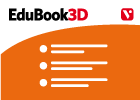
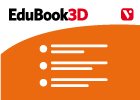
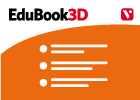
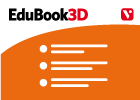


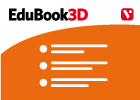
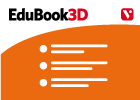
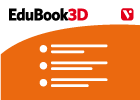
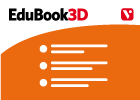
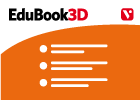
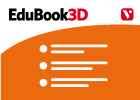
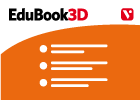


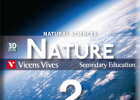
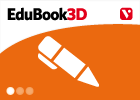
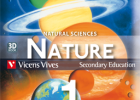


¿Dónde quieres compartirlo?
¿Quieres copiar el enlace?